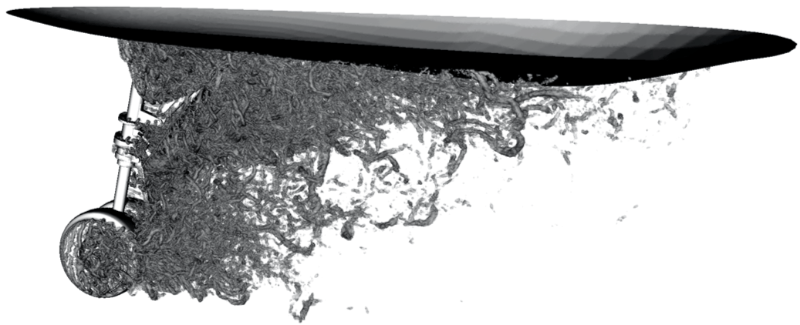Navier-Stoke's equations, Euler's equations, existence of exact solution, weak solution, weak uniqueness, general Galerkin (G2) method, energy estimates, perturbation growth, stability, duality, a posteriori error estimate and adaptivity.
Friction boundary condition, separation, boundary layer, generation of drag and lift, Magnus effect and d’Alembert's paradox.
The General aim is that the students should be able to analyse and use general Galerkin (G2) adaptive finite elements calculation methodology to model movement at high Reynolds numbers. Concretely, it implies that the students should be able to:
- account for the concepts of weak solution and weak uniqueness
- derive energy estimates for underlying equations and G2 approximations
- derive a posteriori error estimates for output in G2 by means of duality
- analyse the global effect of friction boundary in G2 calculations
- use G2 software for adaptive flow computations with error control.
Based on a critical overview of research literature and own computations with G2, the students should furthermore be able to compare state-of-the-art fluid mechanics with G2 calculation/analysis concerning the following fundamental problems:
- turbulence
- separation
- generation of drag and lift in aerodynamics
with applications within a lot of fields, such as car, ship and aircraft industry and ball sports. The intention is to develop a critical approach with possibility to be able to question established truths and shape own hypotheses.
